Galway
Niall was still celebrating Galway’s win in the All-Ireland hurling final when the judges visited his farm in mid-September. Niall is farming at Eyrecourt in Co Galway on really good quality land. He has 31 autumn calving cows on 24 hectares and sells his bulls for finishing as yearlings.
Despite calving in autumn, Niall is a big grass man and credits improved grassland management as being a key component in improving daily liveweight gain on his farm. Everything on this farm is monitored. Niall presented printouts of spreadsheets of each animal on the farm with data coming from the weighing scales. Grass is measured and animals are weighed. His mantra is to measure, monitor and improve.
Average daily liveweight gain in the calves from the time they are housed in November to the time they are weaned in April has improved from 0.99kg/day to 1.11kg/day over the last seven years. For Niall, this means that the bulls are sold at the same weight sooner. Niall credits the extra gain to grass as he gives the calves access to grass every day during the winter.
He has paddocks set up close to the yard and the calves exit the shed through a creep gate and walk down the farm roadway to the grass paddock which is strip grazed. The calves were 289kg at weaning on 12 April.
After weaning they are run in two leader-follower systems, with the heifer calves running ahead of the bull mothers and the bull calves running ahead of the heifer mothers.
About half the farm is at index two for soil fertility. Niall is addressing this by targeting more slurry and chemical phosphorus and potassium to these areas. Niall is increasing cow numbers with the aim of calving down 40 cows in six weeks. He uses fixed time AI on the cows. Niall grew 12.8t/ha of grass on average over 2015 and 2016.
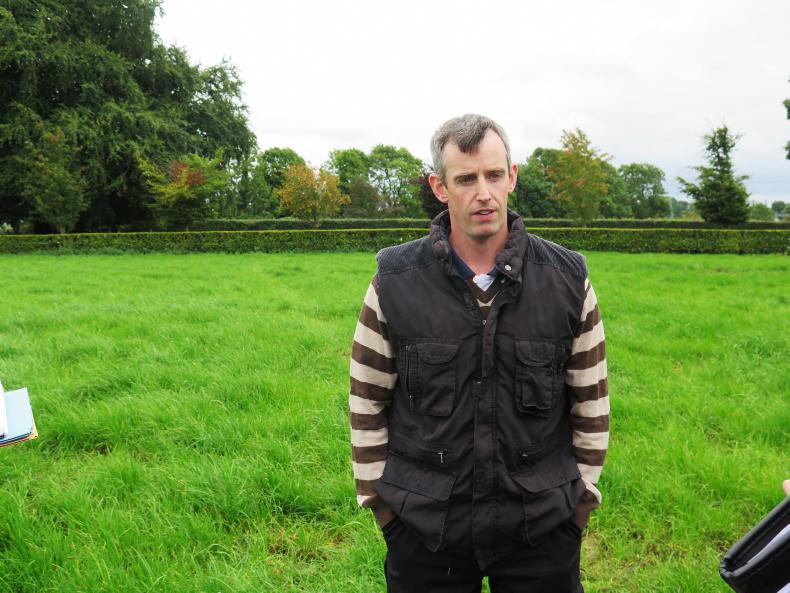
Longford
Father and son team Frank and Des are farming at Newtownforbes in Co. Longford. Their 85 hectare farm is in three divisions and they measure grass weekly on two of them. Des carries the plate meter around in the farm van so it is always at hand when he wants to check a pre-grazing cover or post-grazing height.
The judges visited the home farm at Newtownforbes in September where the Beirnes were grazing cows and calves and had bulls in the shed for finishing. This year they have 87 suckler cows. The cows on the home farm are split into two bunches who each graze their own area. Between cows and calves and heifers and bulls at peak over the summer Des and Frank were managing 11 groups of stock but by September this was back to six groups. They have 321 animals in total.
The land at the home farm is mixed. While the majority is reasonably good quality, some of the lower parts of the farm are very heavy as they are prone to flooding. The production from this land is included in their figures. If it was left out, average production would be even better. As it is, the Beirnes grew 12.1t/ha on average over 2015 and 2016.
When Des is measuring grass he assumes that each centimetre has 250kg of dry matter per hectare in it. These are in line with the Teagasc recommendations for grass density per centimetre. He has been measuring grass for the last five years and says it has made a massive difference to the farm’s bottom line.
In line with the uptake of grass measuring the Beirnes also installed a network of paddocks on their farm. This has made grazing and utilising grass much more efficient. Before, the stock used to graze fields in a sort of set stocked system. Now, animals are moved every day or every day and a half depending on the weather.
When the judges visited the cows were being moved every 12 hours as it rained very heavily the previous day. Effectively, they split their fields in half by running a permanent fence up through the centre, making two fields. These fields are then subdivided into four smaller sections using temporary fences.
The cows move around the field in a rotational grazing system. Des and Frank take down the temporary fence when the cows move on to the next section. They are always back-fencing to protect the re-growths so three strip wires are being used for each herd; two to fence the cows in and the third in the paddock ahead of the cows. Water is provided under the permanent fence, serving both sides of the wire.
The Beirnes have also invested in reseeding and farm roadways. The field the cows were in was reseeded in 2016 using Abergain and Aberchoice.
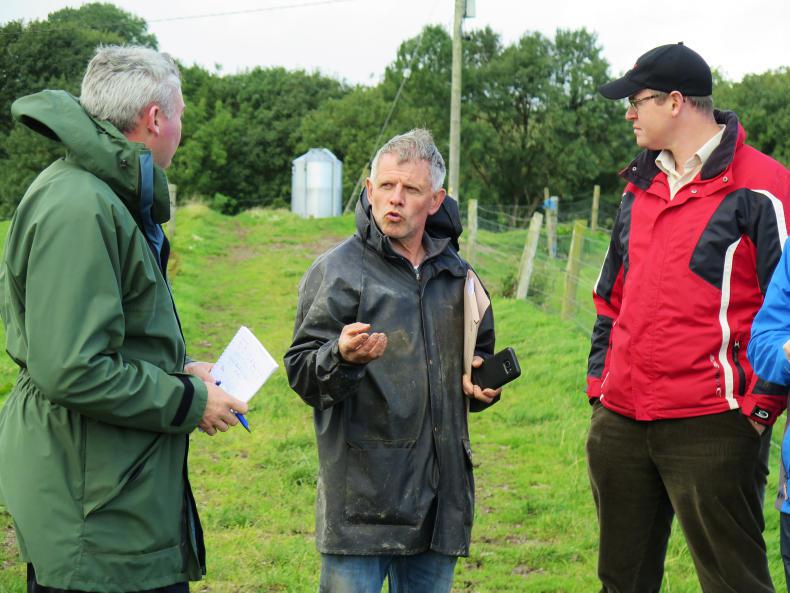
Cork
Ger Dineen (above centre) is farming in picturesque Kilnamatrya, near Macroom in north west Cork. It was from his brother Andrew that Ger first learned how to measure grass and he took to it like a duck to water. Average grass growth over 2015 and 2016 was 13.9t/ha on what is a difficult enough farm.
The weather had turned for the worst when the judges called to the Dineen farm and we had to take shelter from the rain. The cows and calves up the hill hadn’t much shelter but by the time we got to them they were happy enough and out grazing. Ger is a suckler farmer that finishes all bulls to beef. This year he has 60 cows and 15 in-calf heifers. Surplus heifers are sold.
The home farm is comprised of 21 hectares and there is a 10 hectare outfarm. Ger is a fulltime farmer. He does his own AI and most of the machinery work, in between going to Gaelic football training and matches with his football-mad children. The farm is set up in paddocks with fields sub-divided. The calves can move under the wire to get good pick of grass in the next paddock.
All stock including the in-calf heifers graze together. Calves are weaned depending on grass supply. Cows calve in February and March. Ger separates the cows from the calves during AI to increase the submission rate.
Output from the farm is high at 999kg liveweight per hectare. Since he started measuring grass the costs of production for Ger have fallen dramatically. He is now finishing bulls using 1.2t/hd of meal whereas before he was feeding nearly 2.5t per head. He feeds the bulls good quality round bale silage cut from surplus paddocks of 75 to 80% DMD while building up their meal feeding levels.
Ger reseeded a field close to the yard this summer. After spraying off and removing the grass he used a tine harrow twice and set with his Vicon fertiliser spreader. The varieties used were Abergain, Aberchoice and Drumbo.







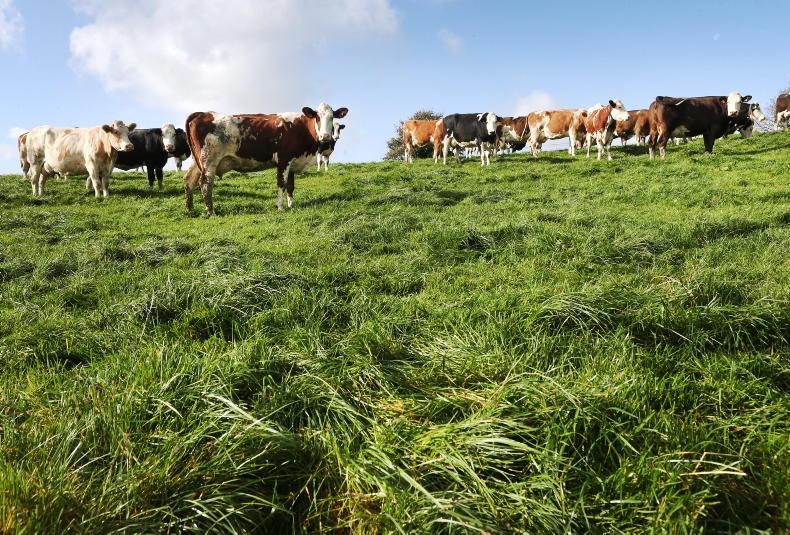

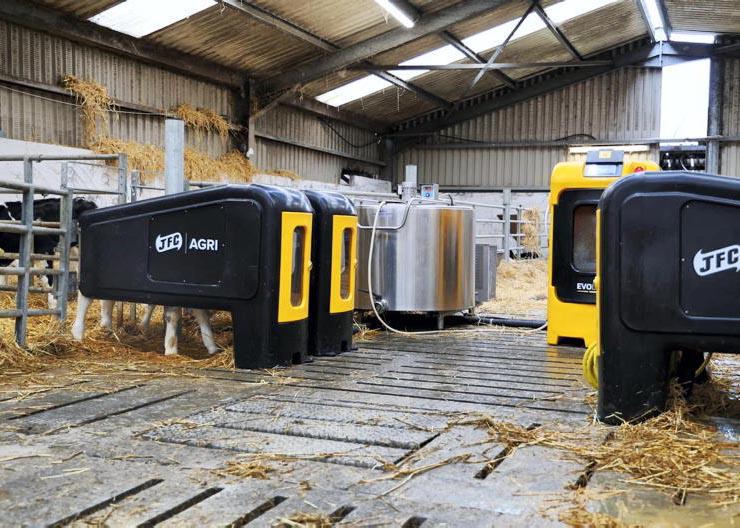

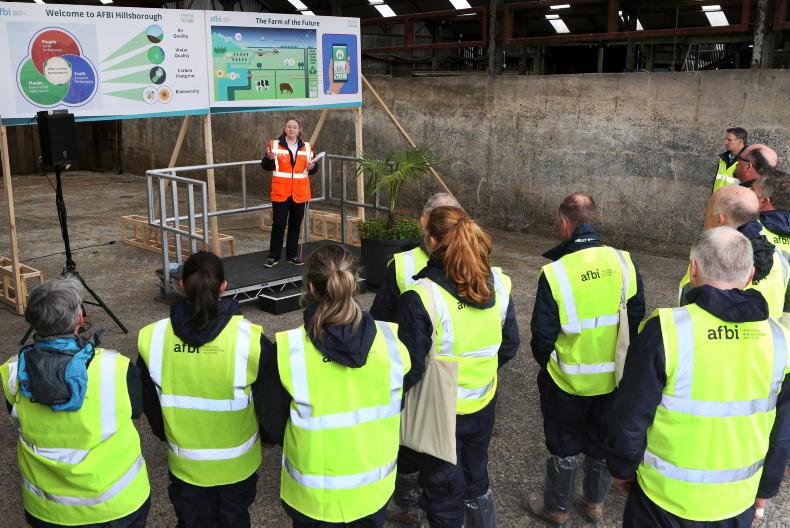
SHARING OPTIONS